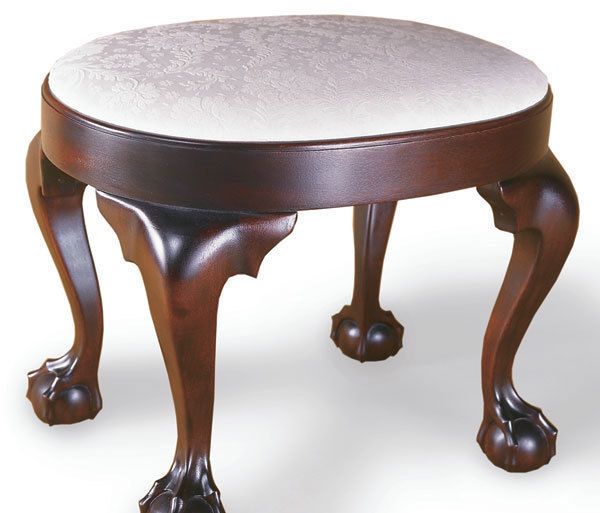A Short History of Stools
Learn about the evolution of three- and four-legged backless seats for one (aka stools).

A stool is essentially a seat with no back or arms intended for one person. As such, it was for many centuries the standard seating arrangement for the majority of people; a chair (a seat with a back) was reserved only for the most important personages.
Early stools were usually supported by three splayed legs let into the seat in the same way as the legs of early benches. A more developed form was the stool made like a miniature trestle table, having two solid sides connected by a substantial stretcher. The sides and stretchers of well-made medieval varieties were frequently pierced and given elegant curved profiles, often with carved surfaces.
X-shaped stools, similar to Roman curules, constituted a common form of stool used by more important people, and these were sometimes made folding and were sometimes also upholstered.
Eventually the most common form of stool became the four-legged joint stool. The distinguishing features of most joint stools are turned legs, most often slightly splayed for greater stability, connected by low stretchers, in form very similar to miniature tables. The name reflects the fact that joint stools were made by joiners, rather than by turners who were responsible for the simpler three-legged variety. Both forms shared common features such as turned legs and simple joinery, but only joiners were licensed to construct stools with mortise-and-tenon joinery.
Stools made for richer households were typically upholstered, and styles reflected changing tastes with both luxurious fabrics and very ornate woodwork. With the increasing use as the more common seating arrangement of chairs (at first often referred to as ‘back stools’), the term “stool” increasingly implied a footstool.
The development of the stretcherless cabriole leg in the 18th-century chair was mirrored in stool use, and joint stools faded into the past. Two later developments tended to confuse the definition of stools: the so-called double stool, which is essentially an upholstered bench, and the window stool, which possesses raised ends in the manner of a day bed, and which also seats more than one person.
Today, although dressing table benches and piano benches may be thought of as direct descendants of the last two stool types mentioned above, the term “stool” once again most commonly implies a three- or four-legged backless seat for one person, often higher than a chair (as, for example, a bar stool), or a much lower support for one’s feet.
Graham Blackburn is a furniture maker, author, and illustrator, and publisher of Blackburn Books (www.blackburnbooks.com) in Bearsville, N.Y.







Log in or create an account to post a comment.
Sign up Log in